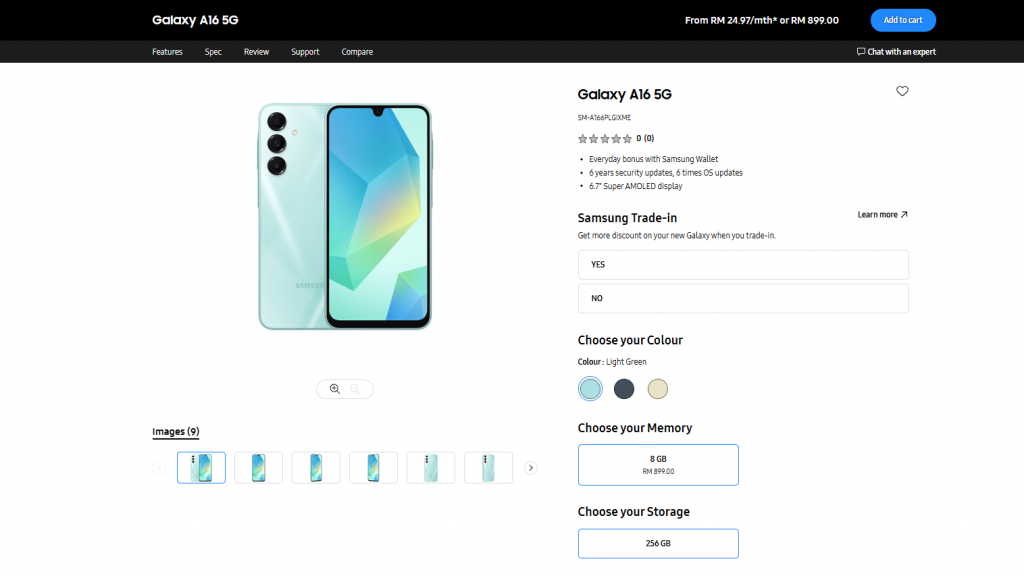This guide will tell you everything you need to know about Peloton Power Zone training. If you’ve delved into the world of indoor cycling, you’ve probably come across Peloton, a premier indoor cycling platform and fitness brand. One of its training methodologies is Power Zone Training. Whether you’re new to Peloton or just seeking to enhance your understanding of this training, this guide will walk you through the intricacies of Peloton Power Zones.
What is Power Zone Training?
Power Zone Training emerges as a meticulously structured and highly individualized training approach, calibrated specifically to resonate with each person’s unique fitness capabilities. Instead of adopting a one-size-fits-all model, it delves deep into the nuances of individual performance, leveraging specific metrics to tailor the experience.
Central to this training methodology is the seven delineated power zones, each carefully defined by a specific range. These zones aren’t random; they’re anchored around a pivotal metric known as the Functional Threshold Power, commonly abbreviated as FTP. This FTP signifies a rider’s peak sustainable power, effectively functioning as a benchmark to categorize their power output.
By strategically maneuvering through these zones, riders can modulate the intensity of their sessions. Each zone provides clear directives, ensuring that every pedal stroke aligns with the intended workout goal, be it recovery, endurance, or sheer power. This intricate interplay of zones offers a roadmap, guiding participants to train smarter, optimize effort, and achieve desired outcomes with precision.
Functional Threshold Power (FTP)
Functional Threshold Power, commonly known as FTP, stands as a central tenet in the realm of cycling analytics. It’s not just a simple number; it encapsulates the zenith of one’s average power output that can be consistently upheld over an extended duration, generally hovering around the 60-minute mark. Think of it as the bridge between endurance and sheer power – it’s that sustained effort you can give before your muscles scream for a break.
This metric isn’t just for show. It holds paramount importance when it comes to assessing an individual’s fitness prowess. It’s akin to a barometer, measuring the atmospheric pressure of one’s cycling capabilities. By understanding where one’s FTP stands, it becomes exponentially easier to delineate training zones that are not only effective but also tailored to an individual’s unique strengths and areas of improvement.

Furthermore, FTP lays the foundational groundwork upon which the intricate system of power zones is built. Without a precise FTP value, determining these zones would be like sailing without a compass – directionless and inefficient. In essence, FTP acts as the cornerstone, ensuring that each training session is calibrated for optimum results.
How to Determine Your FTP?
Peloton has thoughtfully designed its FTP test as a comprehensive 20-minute cycling experience. This isn’t just any ride; it’s a guided endeavor where seasoned instructors accompany you, motivating and directing you to pour out your utmost, consistent effort throughout the duration. The objective is clear: to gauge the pinnacle of power you can muster without faltering.
Now, the magic lies in the data post-ride. The average power you managed to hold steadfast during this two-decade minute interval, with a touch of calibration, becomes your FTP score. This score isn’t static; it’s a dynamic representation of your cycling prowess. As you delve deeper into your training regimen, pushing boundaries and setting new personal records, this FTP score is bound to oscillate.
Understanding the evolving nature of one’s fitness journey, it’s vital to revisit this test at regular intervals. Most seasoned trainers and experienced cyclists recommend a retest every 6-12 weeks. By doing so, you’re not only keeping tabs on your progress but also ensuring that your training zones remain up-to-date, reflecting your current capabilities and ensuring you continue to challenge yourself appropriately.
The Seven Power Zones
Once you have your FTP, you can determine your power zones. Here are the seven zones:
- Zone 1 (Active Recovery): 50-55% of FTP
- This is the calm before and after the storm. Primarily used during the initial warm-up stages of your ride or the winding down stages towards the end, this zone provides an opportunity for muscles to recover and rejuvenate. It’s also the go-to for light, relaxing rides that help in muscle recuperation after more demanding sessions.
- Zone 2 (Endurance): 56-75% of FTP
- Stepping up from the recovery phase, this zone is designed to fortify and boost your aerobic capabilities and stamina. It’s ideal for those prolonged rides where maintaining a consistent and steady power output is essential. The majority of extended-duration rides are situated within this zone, forming the backbone of endurance training.
- Zone 3 (Tempo): 76-90% of FTP
- As we transition to higher intensities, the Tempo zone is pivotal in amplifying one’s sustainable power output. This means riders can maintain these levels for longer durations, thereby improving overall endurance and strength.
- Zone 4 (Lactate Threshold): 91-105% of FTP
- Hovering around your FTP, this challenging zone pushes riders to balance at the precipice of intense effort, demanding them to stay just below, precisely at, or marginally above their FTP. It plays a crucial role in increasing the duration for which one can maintain such elevated intensities.
- Zone 5 (VO2 Max): 106-120% of FTP
- Nudging towards the peaks of aerobic training, this zone aims at the zenith of your aerobic power and capacity. It’s designed to elevate your heart rate considerably and push the boundaries of what you thought was your maximum aerobic potential.
- Zone 6 (Anaerobic Capacity): 121-150% of FTP
- Moving beyond sustained efforts, this zone pivots towards explosive power. It’s about those intense, sharp bursts of energy and power that last anywhere from a fleeting few seconds up to two minutes. This anaerobic zone is all about high-intensity, short-duration prowess.
- Zone 7 (Neuromuscular Power): 150% of FTP and beyond
- The pinnacle of power zones, it’s reserved for those all-out sprint efforts that challenge every fiber in your muscles. These efforts are truly maximal and are often of very short duration, pushing riders to their absolute limits.
Benefits of Power Zone Training
- Personalization: Since it’s based on your unique FTP, the training adjusts to your individual fitness level.
- Structured Progress: Ensures you’re working at the right intensity for your goals.
- Measurable Growth: By retesting your FTP periodically, you can track improvements in your fitness over time.
- Avoid Overtraining: Helps prevent burning out by ensuring you’re not always working at maximum intensity.
Power Zone Classes on Peloton
Peloton offers a variety of Power Zone rides ranging from endurance-focused classes to more intense, max-effort sessions. Instructors like Matt Wilpers and Denis Morton specialize in these rides and provide guidance throughout to ensure riders are in the appropriate zone.

Tips for Power Zone Training:
- Prioritize Hydration: Engaging in rigorous and intense workouts often results in substantial fluid depletion from the body. This loss isn’t merely water; it includes essential electrolytes that play crucial roles in muscle function and other physiological processes. Hence, it’s paramount to continuously replenish these lost fluids and maintain optimal hydration levels. Always have a water bottle handy, and consider adding electrolyte solutions or tablets, especially during longer sessions.
- Tune into Your Body’s Signals: The beauty of our bodies is that they often communicate with us, especially when pushed to their limits. If you find yourself grappling with overwhelming fatigue or discomfort that transcends the usual workout burn, it’s a clear cue to reassess your current intensity. There’s no harm in momentarily shifting to a milder power zone or even designating a day solely for recovery. Remember, pushing too hard without adequate rest can be counterproductive and may risk injuries.
- Champion Consistency: While occasional high-intensity sessions or marathon rides can feel rewarding, it’s the regular, day-to-day commitment to training that truly fosters transformative results. The power of consistency cannot be overstated. Like nurturing a plant, ensuring it gets sunlight and water every day, your body thrives on routine and regular challenges. Whether it’s a full-blown workout or a shorter, recovery-oriented ride, keeping up a consistent schedule ensures that the cumulative benefits of Power Zone Training are actualized over time.
- Re-evaluate and Adapt with FTP: Just as a seasoned sailor recalibrates their compass, so should a dedicated cyclist periodically retest their FTP. As you immerse yourself in training, it’s natural for your endurance and power capabilities to evolve. By periodically taking the FTP test, you can capture these shifts and recalibrate your training zones accordingly. This ensures that your workouts remain challenging yet achievable, optimizing your training journey’s effectiveness and relevance.
Delving into the intricacies of Peloton’s Power Zone Training, one can appreciate its well-crafted and individualized methodology tailored for indoor cycling enthusiasts. Far from a generic training program, this approach is rooted in the philosophy that every rider is unique and deserves a training regimen that resonates with their personal fitness metrics and aspirations.
At the heart of this system lie the power zones, acting as compass points on one’s fitness journey. By gaining a profound understanding of these zones and how they correlate with your Functional Threshold Power, there’s an opportunity to truly harness and channel your energy in each workout. This isn’t about merely pedaling harder; it’s about pedaling smarter.
Moreover, the granularity of the power zones ensures that each session can be evaluated and adjusted in real-time. Riders can thus continuously monitor their trajectory, noting improvements, and identifying areas that might need a tad more focus. It’s like having a personal fitness diary, capturing the ebbs and flows of one’s journey.
Ultimately, with Peloton’s Power Zone Training as a guiding light, the path to achieving fitness milestones becomes clearer, more strategic, and, most importantly, tailored to fit the unique profile of every dedicated rider. It’s not just about breaking a sweat; it’s about breaking barriers and setting new personal bests. We hope that this guide explains exactly what Peloton Power Zone training is and how to use it to improve your fitness. If you have any comments, questions or suggestions, please leave a comment below and let us know. You casn find out more details about Power Zone training over at the Peloton website.
Filed Under: Guides
Latest togetherbe Deals
Disclosure: Some of our articles include affiliate links. If you buy something through one of these links, togetherbe may earn an affiliate commission. Learn about our Disclosure Policy.




